
It is thick, lucious, and incredibly soft.
In fact, the chinchilla is among the softest animals on the planet.
That’s a bad thing, if you’re a chinchilla. You might end up a piece of a fur coat.
But chinchilla fur can look bad too. Matted chinchilla fur is a common example.
But aesthetics are not the only problem. Fur mats can lead to numerous health issues, too.
Keep reading to learn everything you need to know about fur mats in chinchillas, including how they form, how to prevent them, and how to fix chinchilla matted fur.
Contents
Matted Chinchilla Fur
Chinchillas have short, dense coats made of silky, soft hair. That hair can get knotted, tangled, or matted for numerous reasons.
Matted hair in chinchillas typically appears as dirty, clumpy fur that is entangled in small knots. It is important to understand the causes of matted chinchilla fur and take steps to eliminate and prevent it.
Why Is My Chinchilla’s Fur Matted?
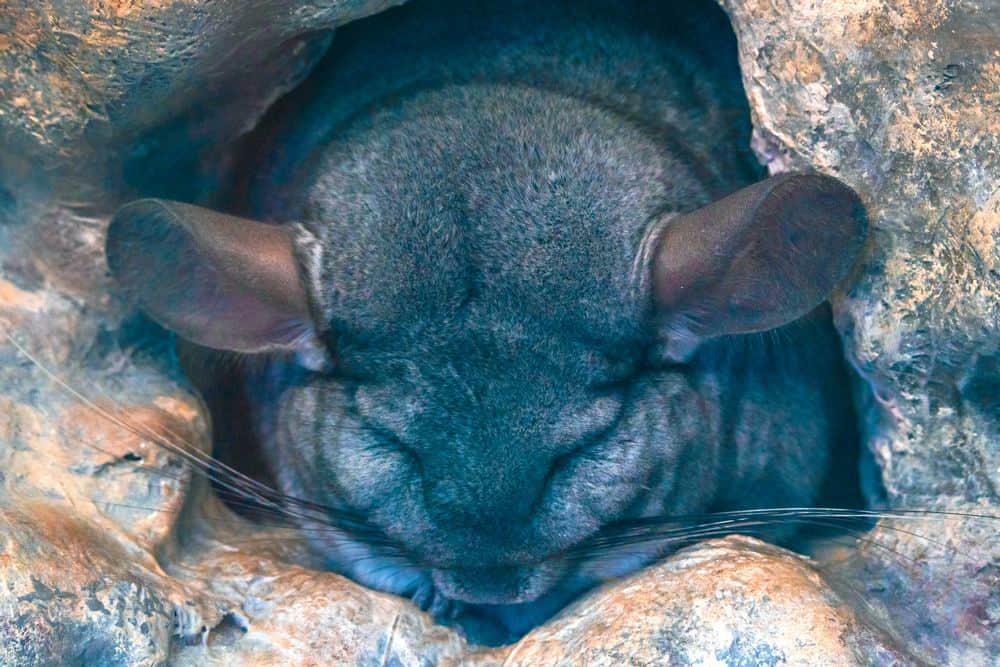
Chinchilla fur can get matted for a number of different reasons. Here are the most common ones.
Humidity And Static Electricity
Mats are more likely to occur in chinchillas when the weather is humid. Moisture from the air gets trapped in their thick fur. It takes an extremely long time to dry, resulting in mats and knots. Similarly, static electricity can cause a chinchilla’s hair to become frizzy and form knots and tangles.
Urine Or Poop Sticking To It
Your chinchillas are most likely to have clumped or tangled fur on their bottoms and lower limbs. This may be due to urine and feces getting stuck to their hair, resulting in sticky clumps.
A lack of cage hygiene is the main culprit here. If you have not cleaned the cage and removed soiled bedding and feces, it may result in a wet coat. The wet coat then attracts more feces, pieces of bedding, and other debris.
Over time, these things get stuck together and result in matting. That is why you should clean poop and soiled bedding daily, in addition to a weekly deep cleaning of the cage.
Weed, Hay, Or Grass Sticking To It
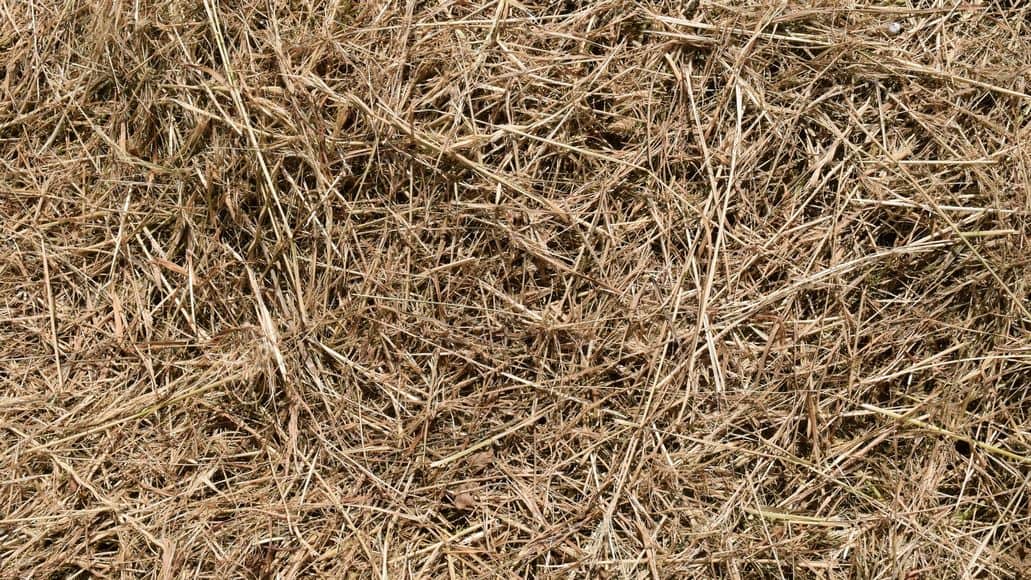
Chinchilla fur can attract debris because of its thickness. If you let your pet outside for exercise (you shouldn’t), its fur could trap sticks, grass, weeds, pollen, and other dirt.
If it plays in the house, it can attract dust and whatever else might be floating around. Even inside the cage, there may be hay and grass, which can get buried in the thick fur and form mats.
Lack Of Self-Grooming
Healthy chinchillas usually groom themselves fastidiously (and also groom each other) to maintain their beautiful coats. If you have a single chinchilla, it should ideally self-groom and prevent mats.
However, some chinchillas stop grooming if they are sick, in pain, or stressed. This can result in knots, mats, and dull coats.
Obesity
Obese chinchillas are more likely to develop knots and mats in hard-to-reach areas of their bodies. Make sure your chinchilla gets a healthy diet of hay and pellets, and plenty of exercise, to prevent unnecessary weight gain. This way, your pet can easily access all of its body parts and self-groom.
Insufficient Dust Baths
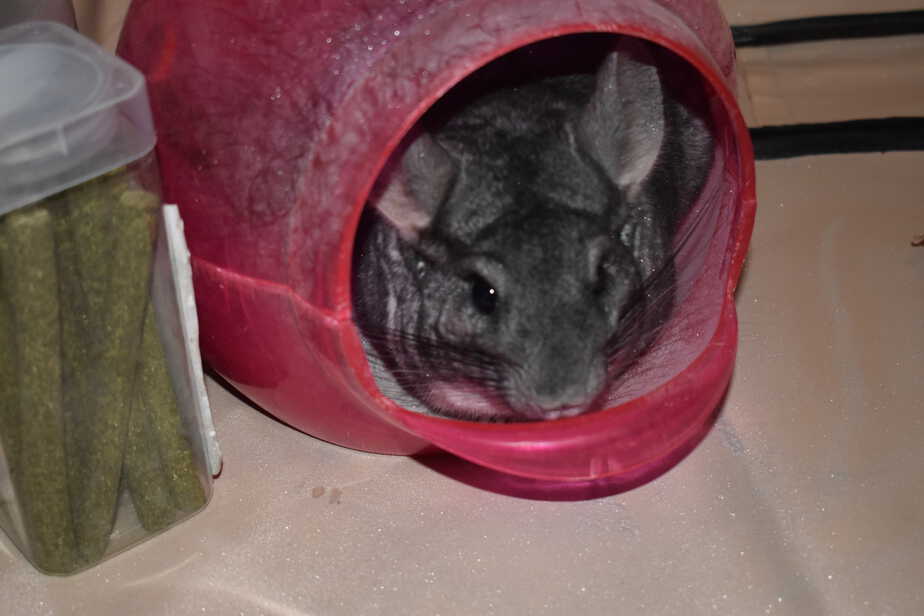
Chinchillas need 2 to 3 weekly dust baths to keep their fur clean, dry, and free from debris. If you fail to provide dust baths, then there is a greater chance that your pet’s fur could get matted due to the moisture and debris trapped in it, which can form stubborn knots and mats.
Does Matted Fur Cause Pain?
Matted fur could impact a chinchilla’s health negatively. Severe matting can result in pain and skin infections, including hot spots.
In rare cases, the matting could restrict your pet’s limbs, leading to deep wounds or swollen limbs. In some animals, severe matting can result in bed-sore-like lesions.
Worse, matting could encourage parasites like mites, ticks, and fleas to hide in the affected area of fur. This can transmit diseases and severely impact your chinchilla’s health.
How To Fix Matted Chinchilla Fur
If you notice that your chinchilla has matted fur, you will want to take measures to get rid of the mats. Here are some steps to follow to remove mats from your chinchilla’s fur.
Supplies Needed
- A small soft-bristled brush or comb
- Damp cloth
- Treats
- Towel to dry your pet
- Scissors or small-pet hair clippers
- Dust bath
Wipe The Sticky Areas
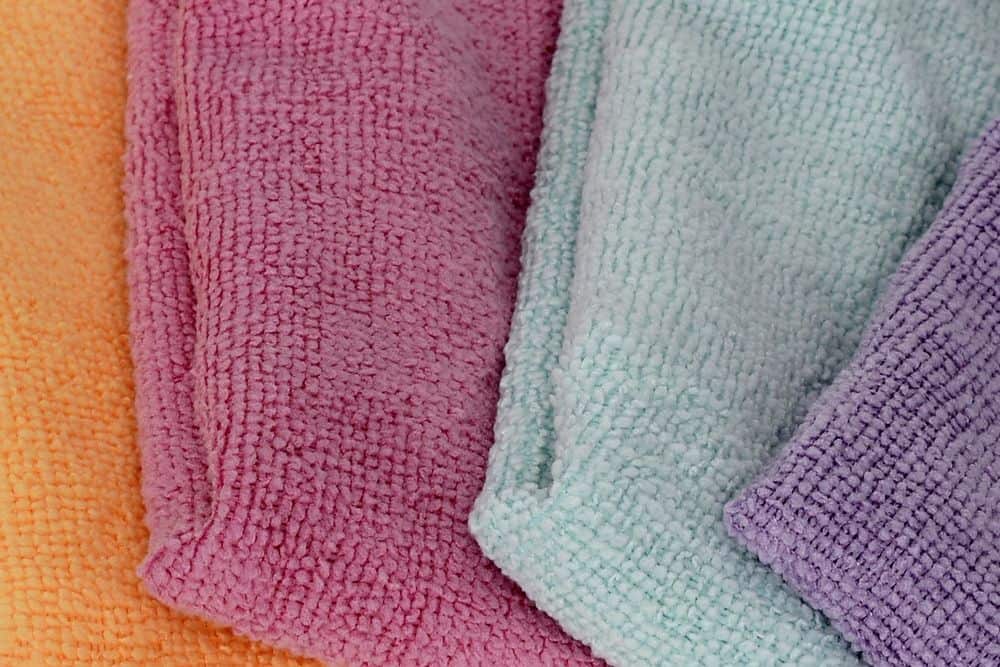
Use a damp cloth, towel, or tissue paper to gently remove debris, feces, and other sticky bits from the matted coat. Do not wet or soak your pet’s fur. Chinchilla fur takes a long time to dry, inviting fungal infections. But damp fur is easier to brush and detangle, so go ahead and get it a bit damp.
Brush Your Chinchilla
Gently and thoroughly brush your pet’s coat. Avoid sharp tugs on the matted areas. Use a comb with wide teeth to gently tug the knots out. Talk soothingly to your chinchilla to ensure it remains calm throughout the grooming process.
Trim The Knots
Comb as much of the fur as you can, but if the knots are stubborn, you may need to trim them. Hold the matted parts away from the skin and quickly snip off the knotted hair.
Treat And Praise
Reward your chinchilla with a high-value treat, and make sure you groom it regularly to prevent future mats from forming.
Is It Safe To Cut Off Matted Fur?
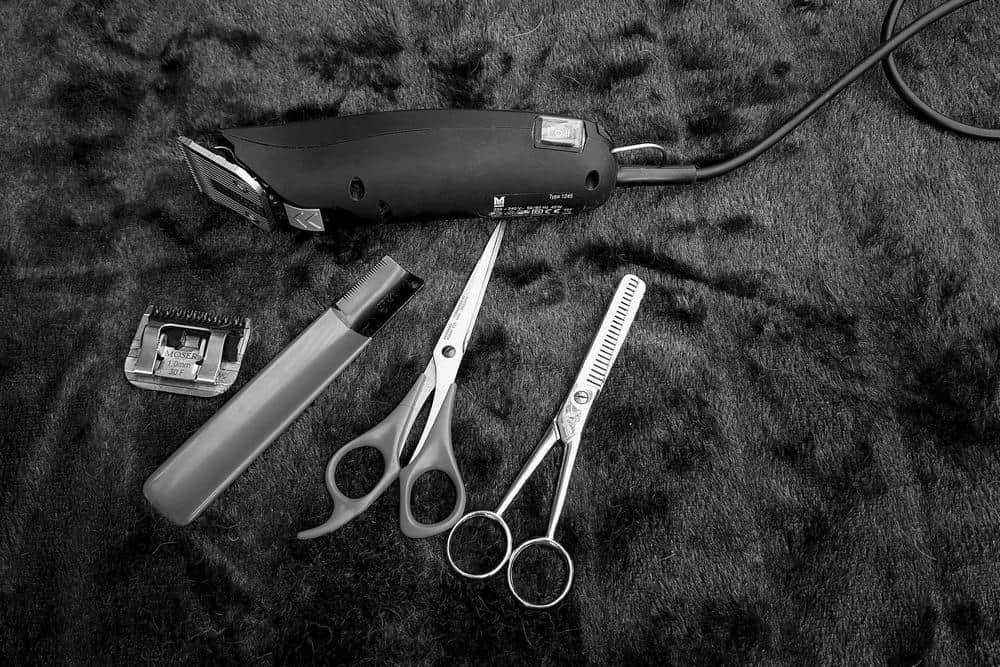
Yes, you can cut, clip, or trim the matted fur on your chinchilla. However, do make sure to use scissors or clippers specially designed for small animals.
Be careful, and make sure to lift the knot away from the chinchilla’s body before trimming it. Ensure that the clippers or scissors do not touch your chinchilla’s skin.
Can You Wash Matted Fur?
Please do not wash matted fur in chinchillas. In fact, you should not wash chinchillas at all. Their thick fur tends to trap the water which could escalate into other skin issues.
The best way to reduce chinchilla matting is by trimming out all of the stubborn mats and combing the smaller mats with a comb or a brush. This can help loosen the fur and detangle the matted hair.
If there is feces or debris stuck in the mats, use damp (not wet) tissue paper or cloth to gently wipe out the sticky mess. Do not use too much water.
Does Chinchilla Fur Mold?
Yes, chinchilla fur can develop mold or fungal infections, if it is left wet for a long time. That is why you must take care to ensure that your chinchilla does not get wet.
Water and chinchillas do not go well together. We must always remember that chinchillas have extremely dense fur, which cannot dry thoroughly and tends to trap water droplets at the bottom.
This can cause mold and other fungal skin issues. Furthermore, the trapped water may make your small pet feel cold, and it may not be able to warm itself. This could increase the risk of hypothermia in the winter months.
Why Shouldn’t Chinchillas Get Wet?

As mentioned above, chinchillas should not get wet, because their thick fur does not dry easily. It traps the moisture long enough to cause mold or fungal spores to multiply.
The thick fur then becomes a breeding ground for pathogens and microorganisms that may result in skin infections.
Fur fungus in chinchillas can result in dry skin, lesions, itchy skin, and secondary infections that result from excess chewing, licking, or self-grooming. Your pet may even need antibiotics or antifungal topical and systemic medications to cure fur fungus.
Chinchilla Matted Fur: Final Thoughts
Matted chinchilla fur is not just unsightly. It can cause a number of health problems. For that reason, you want to make sure to get rid of any fur mats you notice on your pet as soon as possible.
Luckily, it is not hard to do. Follow the instructions above to get rid of those pesky mats. Then follow our tips on preventing future hair mats, so you don’t have to deal with the issue again.
Leave a Reply